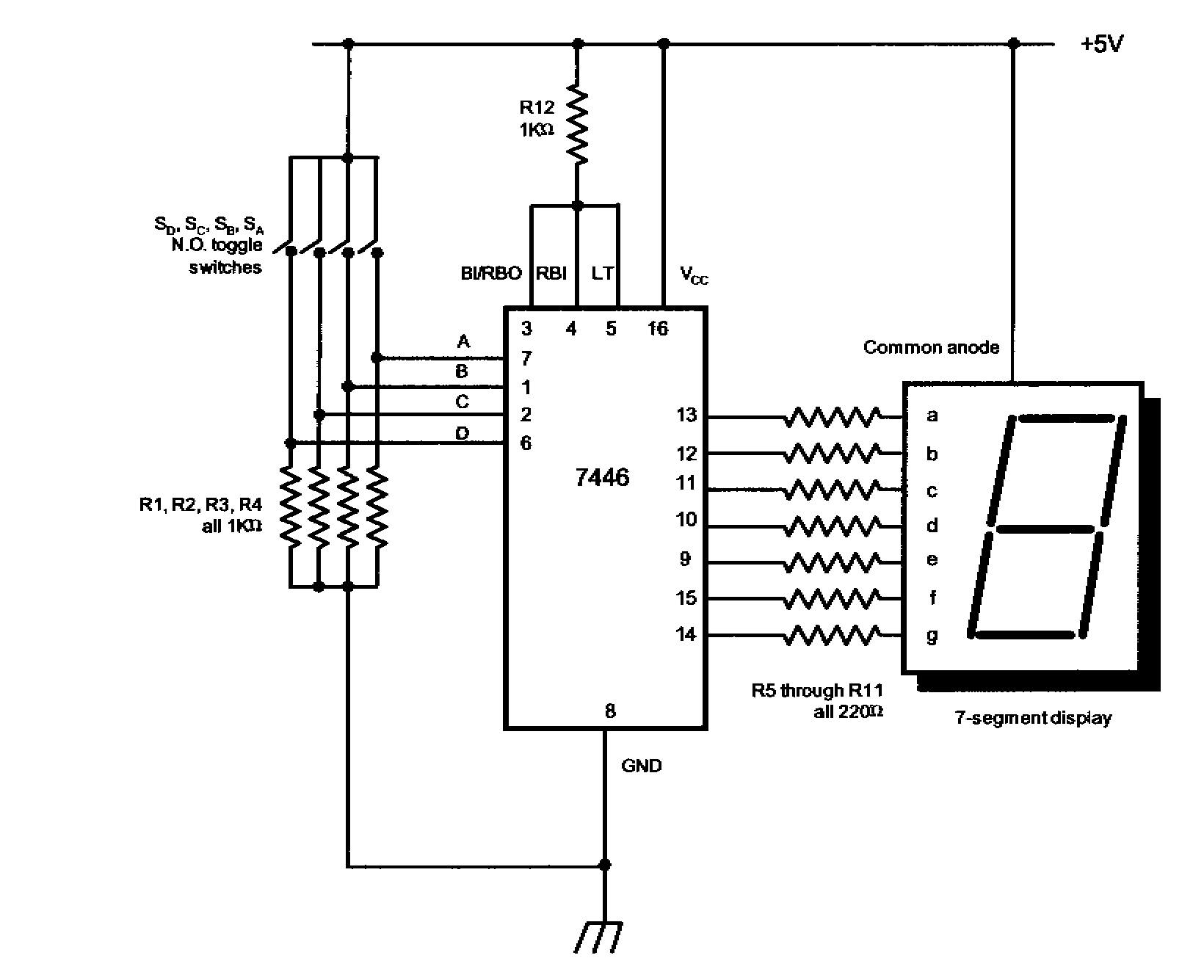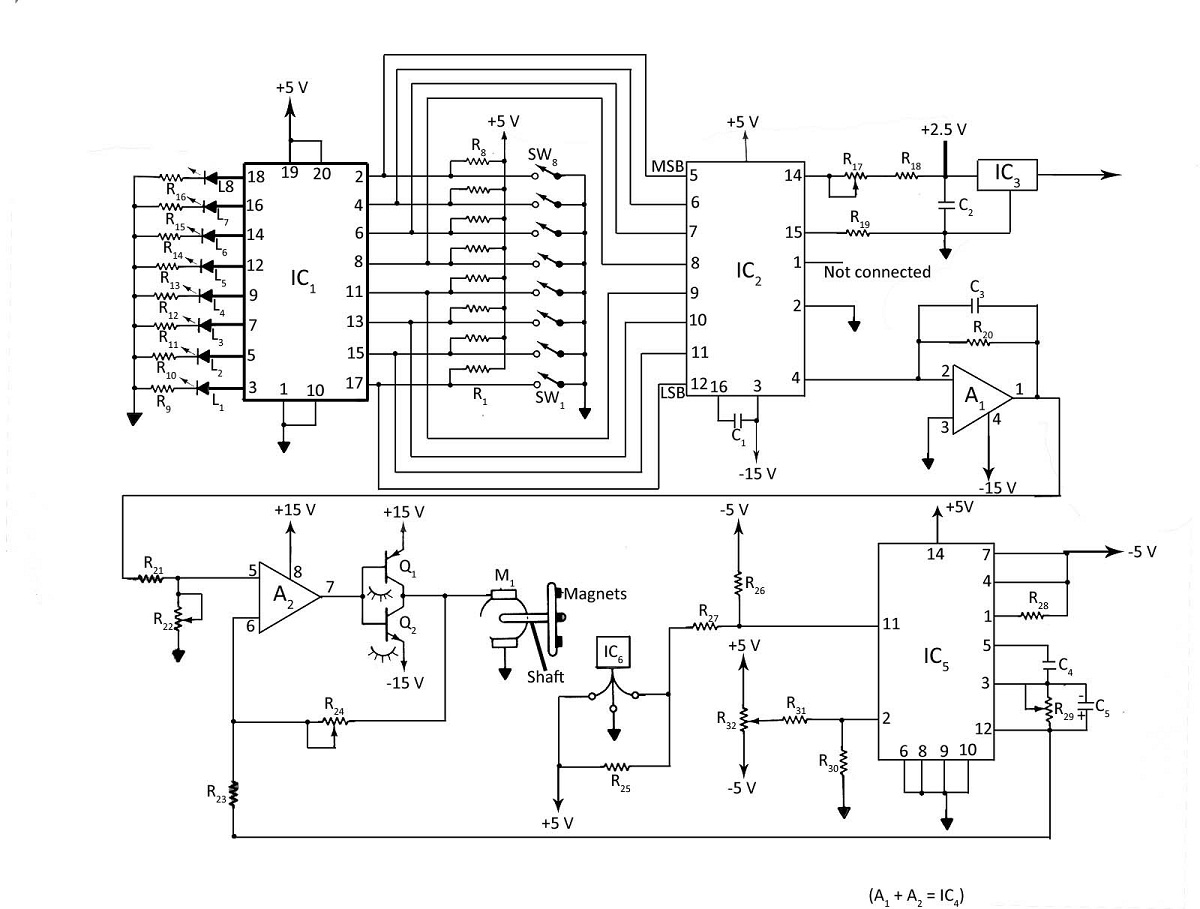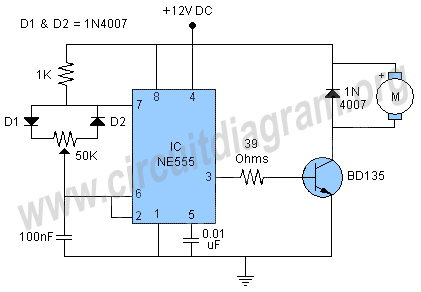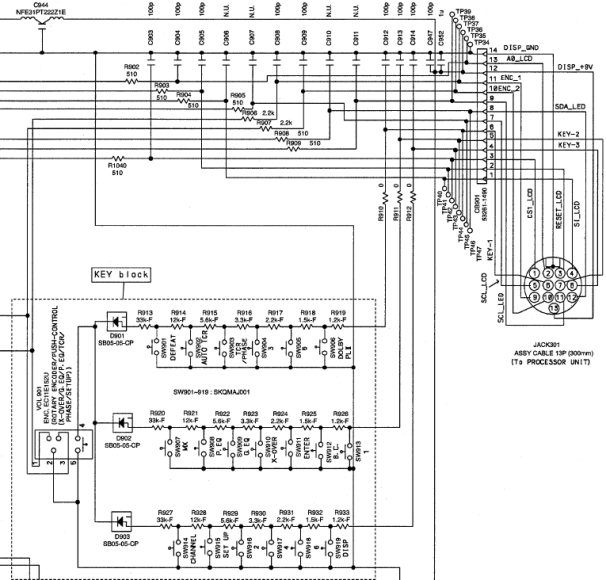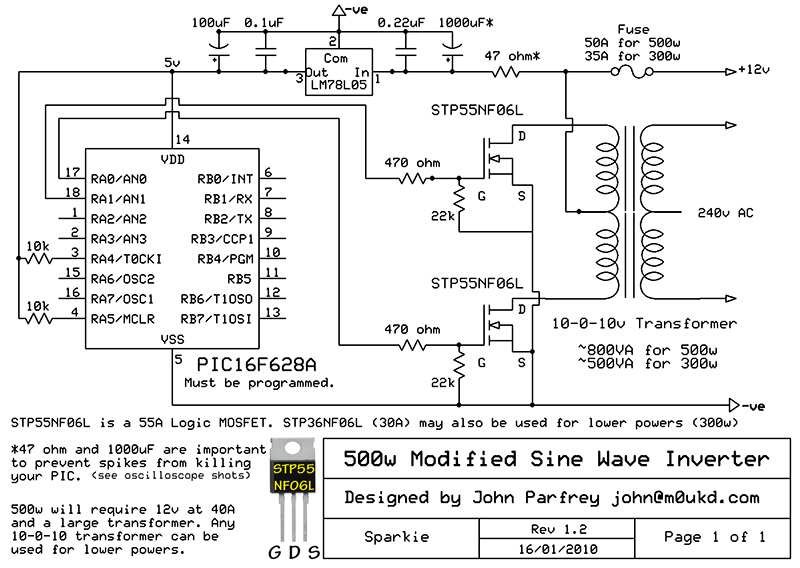
Tone Control
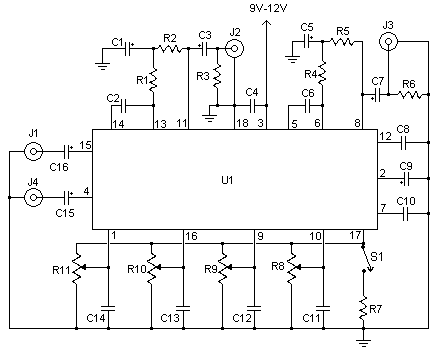
Tone Control. Parts: Total Quantity of Parts: Substitutions C1, C3, C5, C7, C15, C16 - 6 pieces of 2.2µF Electrolytic Capacitors; C2, C6 - 2 pieces of 0.05µF Ceramic Capacitors.
The tone control circuit is designed to adjust the frequency response of an audio signal, allowing for enhancement or attenuation of specific frequency ranges. This circuit typically employs a combination of capacitors and resistors to create filters that modify the audio signal's bass, midrange, and treble characteristics.
In this particular tone control circuit, there are two types of capacitors utilized: six 2.2µF electrolytic capacitors and two 0.05µF ceramic capacitors. The electrolytic capacitors (C1, C3, C5, C7, C15, C16) are primarily used for coupling and decoupling applications, where they help to block DC voltage while allowing AC signals to pass. Their larger capacitance value is suitable for low-frequency applications, making them ideal for bass enhancement in the tone control circuit.
The ceramic capacitors (C2, C6), with a smaller capacitance value of 0.05µF, are typically used for high-frequency filtering. These capacitors are known for their stability and reliability, making them suitable for treble adjustments. The combination of these capacitors allows the tone control circuit to effectively shape the audio signal across a wide frequency range.
The overall design of the tone control circuit may incorporate potentiometers or variable resistors, which enable users to adjust the level of bass, midrange, and treble. By manipulating these controls, the user can achieve the desired tonal balance for various audio sources, enhancing the listening experience.
In summary, the tone control circuit described is an essential component in audio systems, providing flexibility in sound customization through the strategic use of electrolytic and ceramic capacitors.Tone Control. Parts: Part Total Qty. Substitutions C1, C3, C5, C7, C15, C16 6 2.2uf Electrolytic Capacitor C2, C6 2 0.05uF Ceramic. 🔗 External reference
The tone control circuit is designed to adjust the frequency response of an audio signal, allowing for enhancement or attenuation of specific frequency ranges. This circuit typically employs a combination of capacitors and resistors to create filters that modify the audio signal's bass, midrange, and treble characteristics.
In this particular tone control circuit, there are two types of capacitors utilized: six 2.2µF electrolytic capacitors and two 0.05µF ceramic capacitors. The electrolytic capacitors (C1, C3, C5, C7, C15, C16) are primarily used for coupling and decoupling applications, where they help to block DC voltage while allowing AC signals to pass. Their larger capacitance value is suitable for low-frequency applications, making them ideal for bass enhancement in the tone control circuit.
The ceramic capacitors (C2, C6), with a smaller capacitance value of 0.05µF, are typically used for high-frequency filtering. These capacitors are known for their stability and reliability, making them suitable for treble adjustments. The combination of these capacitors allows the tone control circuit to effectively shape the audio signal across a wide frequency range.
The overall design of the tone control circuit may incorporate potentiometers or variable resistors, which enable users to adjust the level of bass, midrange, and treble. By manipulating these controls, the user can achieve the desired tonal balance for various audio sources, enhancing the listening experience.
In summary, the tone control circuit described is an essential component in audio systems, providing flexibility in sound customization through the strategic use of electrolytic and ceramic capacitors.Tone Control. Parts: Part Total Qty. Substitutions C1, C3, C5, C7, C15, C16 6 2.2uf Electrolytic Capacitor C2, C6 2 0.05uF Ceramic. 🔗 External reference
